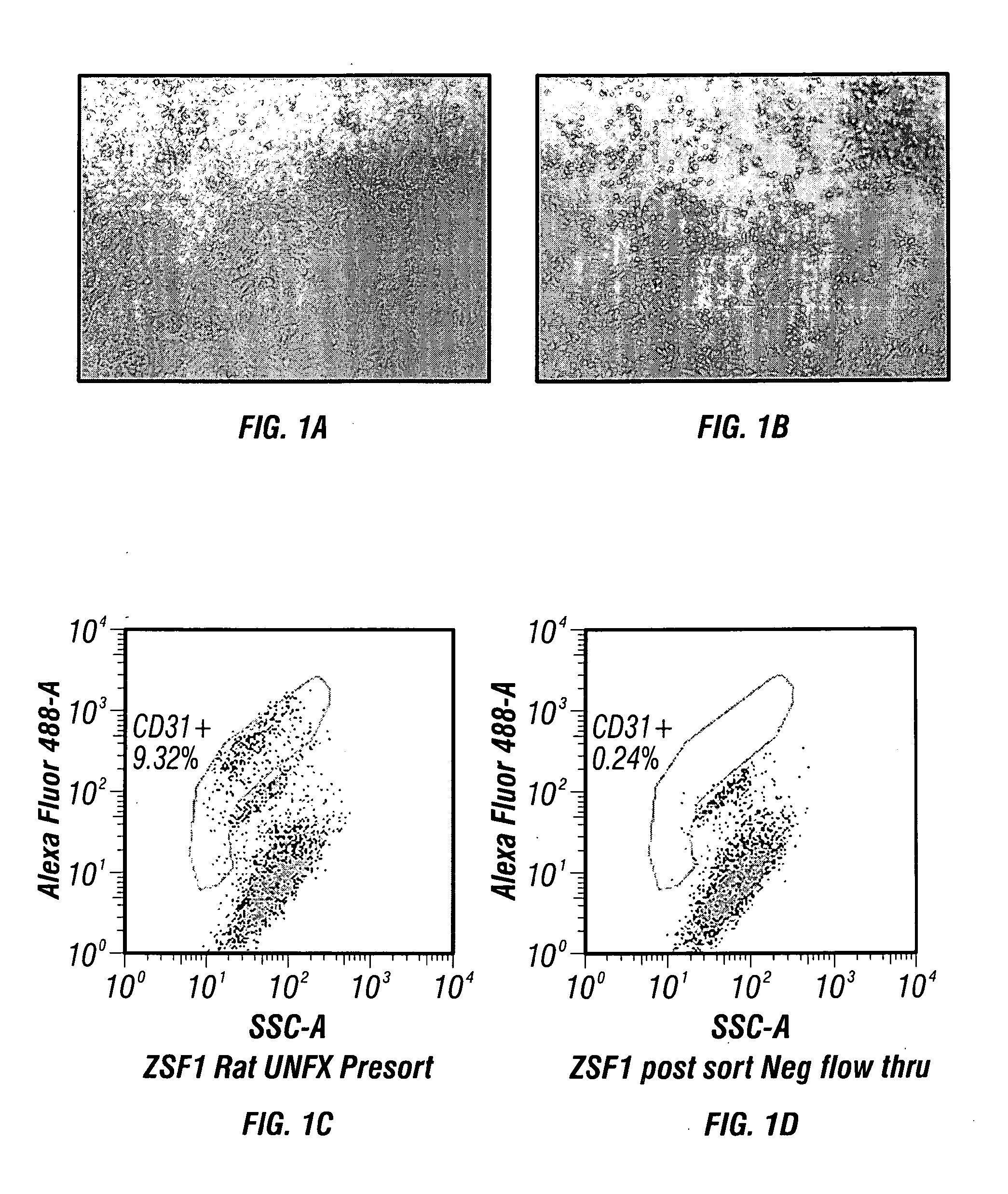Organoids comprising isolated renal cells and use thereof
a technology of kidney cells and organoids, applied in the field of organoids comprising isolated renal cells, can solve the problems of significant quality-of-life issues, insufficient supply of high-quality donor kidneys, and the loss of renal function of patients with renal failur
- Summary
- Abstract
- Description
- Claims
- Application Information
AI Technical Summary
Benefits of technology
Problems solved by technology
Method used
Image
Examples
example 1
Isolation of Selected Renal Cell+ (SRC+) Cell Populations: Isolation of Endothelial Cells from Renal Biopsy
[0181]The following method provides an example of endothelial cell isolation following enzymatic digestion using a previously adapted Collagenase / Dispase digestion protocol2,3,5. This method has been applied to diseased ZSF1 rat kidneys and to a kidney biopsy obtained from a hypertensive human ESRD patient on dialysis.
Endothelial Cells (EC), Vascular and Lymphatic Origin:
[0182]Digested kidney(s) using standard operating procedures for kidney cell isolation, as described infra., are filtered through a 100 μm Steriflip filter (Millipore). The remaining cell suspension is neutralized with DMEM containing 5% FBS and then washed by centrifugation at 300×g for 5 minutes. The cell pellet recovered through the 100 μm filter is re-suspended in fully supplemented EGM-2 growth medium (Lonza) and plated onto fibronectin coated dishes at a cell density of 25 K / cm2. The cultures are fed ever...
example 2
Generation and Characterization of Organoids from SRC and SRC+ Populations
Self-Generated Organoid / Spheroid Formation
[0194]Organoids were generated following primary kidney culture, expansion and buoyant density gradient centrifugation to isolate SRC (standard operating procedures for generating NKA, as described infra). Briefly, SRC were re-suspended in 100 ml of renal cell growth medium at a concentration of [1×106 cells / ml] in spinner flasks (Corning) for 24-48 hrs on a magnetic stirrer set at 80 rpm (FIG. 4). Cell organoids / spheroids consist of clusters of cells ranging in size from 50-125 μM. Cell number per organoid can vary based on cell type and size prior spinner flask culture. Organoid / spheroids have been generated from both rat and human SRC and express a tubular epithelial phenotype (FIG. 5).
Organoid Function and Tubulogenesis
[0195]The ability of SRC to form tubes may be applied to assess potency of NKA. This assay was applied to the SRC organoids cultured in a 50:50 mixt...
example 3
Characterization / Biodistribution of SRC Organoids in Rodent Models of Kidney Disease
[0197]ZSF1 acute study evaluating bio-distribution and cell retention of SPIO labeled organoids over a 48 hr period. Six 40+ week old ZSF1 rats were injected into the parenchyma with 2.5×106 SPIO Rhodamine labeled cells (representing approximately 25000 self-generated organoids in PBS) at a concentration of 50×106 / ml in left caudal pole. (FIG. 9). Three animals were harvested at intervals of 24 and 48 hrs post implantation. Kidneys were evaluated by MRI and histologically using Prussian blue and H&E staining method for cell retention and bio-distribution (FIGS. 10 & 11).
[0198]Results
[0199]Organoids were readily labeled and traced following targeted delivery. Organoid treatment was well tolerated with no morphological alterations observed in the tubular or glomerular compartments. Multifocal Clusters of epitheloid cells (staining positive by Prussian blue) were frequently observed in the renal cortex ...
PUM
| Property | Measurement | Unit |
|---|---|---|
| time period | aaaaa | aaaaa |
| time period | aaaaa | aaaaa |
| temperature | aaaaa | aaaaa |
Abstract
Description
Claims
Application Information
 Login to View More
Login to View More - R&D
- Intellectual Property
- Life Sciences
- Materials
- Tech Scout
- Unparalleled Data Quality
- Higher Quality Content
- 60% Fewer Hallucinations
Browse by: Latest US Patents, China's latest patents, Technical Efficacy Thesaurus, Application Domain, Technology Topic, Popular Technical Reports.
© 2025 PatSnap. All rights reserved.Legal|Privacy policy|Modern Slavery Act Transparency Statement|Sitemap|About US| Contact US: help@patsnap.com



